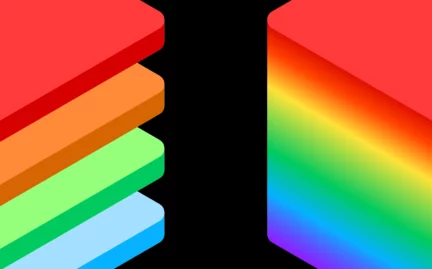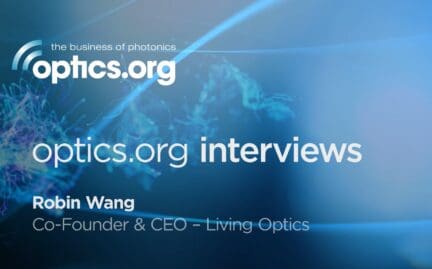Future generations will hopefully look back at the level of consumption present in today’s society with horror and confusion. We go through the trouble of extracting, refining, and processing natural resources only to throw much of it away after a single use. Burying it in a landfill with little consideration for its long-term environmental impact.
To break this cycle, we must develop new and more effective recycling practices and fundamentally shift the mindset of both businesses and consumers. Recycling helps preserve natural resources and habitats, reduce pollution and energy use, and, ultimately, minimize the global population’s impact on the planet and its climate.
Unfortunately, the scale of the problem we need to solve cannot be understated:
- America alone generates over 290 million tons of solid waste each year in packaging, clothing, food waste, and other everyday items. Some are recycled, composted, or burned for energy, while 50% ends up in a landfill, emitting greenhouse gases as it decomposes.
- Statistics show around 60% of clothing worldwide will end up in landfills or incinerators within only a year of it being produced. It is the equivalent of a truckload of clothing every second.
- For plastic, 15% of global production is collected for recycling, but only 9% is eventually reused. 19% is incinerated, 50% goes into landfills, and 22% will evade waste management systems, ending up in uncontrolled dumpsites.
Improving these statistics will take a range of new processes, including better manufacturing techniques to make more reusable materials, redesigning products with less packaging, more infrastructure for waste collection, and better waste separation to make recycling more attractive financially.
You can make the environmental case for recycling to businesses, but what really moves the needle is the economic one. For recycling to become the norm, we need fast, efficient, and accurate waste sorting systems that achieve high enough purity so that material can be reused to create high-quality secondary products.
Large batches of recyclable material are worth very little until they are separated into common materials. For example, many plastics, like polyethylene and polypropylene, need to be sorted into fractions with very high purity for them to be effectively reused, even in excess of 97%.
Thankfully, new methods of imaging recyclable material show significant promise when it comes to improving waste separation. In particular, hyperspectral imaging.
Hyperspectral imaging applications for waste sorting
Objects absorb and reflect light in different ways depending on their chemistry. This is how they get their colour. However, by looking in more detail, it is possible to see a lot more than just colour. This is precisely what hyperspectral imaging does.
While traditional photography images in three bands of light (recreating how the human eye sees the world), hyperspectral imaging sensors are designed to measure light in many more bands. Even seeing into parts of the spectrum invisible to the naked eye, such as infrared .
With enough bands, it is possible to identify spectral signatures that reveal chemical information. This level of detail is captured on a pixel-by-pixel basis, simultaneously measuring both spectral and spatial information to distinguish what different objects in an image are made of.
Seeing more than meets the eye has led to a range of hyperspectral imaging applications, from environmental monitoring, agriculture, and food safety to healthcare and archaeology . Another exciting use case is to automate hyperspectral imaging to dramatically improve the performance of waste sorting systems.
Hyperspectral imaging offers the data needed to identify different materials, such as plastics, glass, paper, metals, textiles, and more, improving the accuracy of waste separation and enabling recycling systems to output higher-quality materials.
Waste sorting systems based on traditional photography can only separate items based on shape and colour. But objects can look visually similar to the naked eye or conventional cameras while being made of entirely different materials. Relying on manual sorting is not feasible given the amount of material to sort, the economics of the problem, and the potential health risks associated with certain waste products.
But if we can automate hyperspectral imaging to power more advanced waste separation at scale, it would be possible to significantly reduce the amount of material going to landfills and increase the purity of materials for new recycled products. Better products improve the economic case for recycling while also reducing society’s environmental impact.
Implementing automated hyperspectral imaging for waste sorting
Hyperspectral imaging is not limited to a single type of waste. It can be applied to a range of waste sorting tasks, including:
- Plastics: sorting waste into single polymer streams with very low contaminants based on identifying the chemical composition of different plastics. Hyperspectral imaging sensors can see into the infrared region to identify spectral signatures for black plastics that typically reflect very little light in the visible region.
- Textiles: distinguishing between different fibres, including whether they are manmade, natural, or mixed.
- Industrial waste: separating industrial waste and outputting valuable, reusable material without exposing workers to often hazardous conditions.
A typical waste sorting system for household items consists of a conveyor belt with robot arms able to move items based on the output of a sensor system. A hyperspectral waste sorting system would replace this sensor with one that can see in more detail. Combining hyperspectral data and computer vision software, it is possible to create a series of rules to mechanically sort recycling based on the different materials present.
However, there are challenges to automating hyperspectral imaging for real-world use cases such as waste sorting.
Firstly, hyperspectral systems output a tremendous amount of data. While images from a traditional camera return a 2D array of pixel values, or colours, a hyperspectral imaging sensor returns a spectrum for every pixel. This is referred to as a hyperspectral data cube, with 30 or more channels for each pixel, dramatically increasing the data received.
For a hyperspectral waste sorting system to be viable, it has to separate items in real time. This places a tremendous burden on both the hardware and software.
Next, the hyperspectral system needs to be robust enough to be deployed outside of a controlled lab environment. Hyperspectral systems are often complex and fragile systems that break down in real-world scenarios. Finally, and again we’re coming back to money, it has to be priced such that the benefits outweigh the cost of deployment.
Overcoming the challenges of hyperspectral imaging for waste sorting with Living Optics
The Living Optics Camera incorporates innovative optical techniques in collaboration with algorithmic development to ensure the seamless integration of both spatial and spectral data. The camera captures hyperspectral data at video framerates and, with minimal training, outputs actionable information at greater accuracy and a fraction of the training cost of traditional RGB-based systems. The ability to deliver real-time actionable information enables a range of real-world use cases, such as automated, scalable, efficient, and accurate waste sorting.
Get in touch today to learn more about incorporating Living Optics technology into your waste sorting processes.



